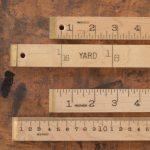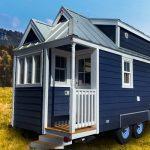Propane gas tank size – dimensions and weight (size charts included)
Propane is portable and clean-burning. The use of a liquefied gas gives more shots per cylinder, compared to the compressed gas. With propane, you can set up small or large propane tanks as you feel like it. The best part? It’s portable. What are the sizes of Propane gas tanks? or what is a standard propane gas tank size for residential use? What size of propane gas tank is needed to live off the grid? Learn all about it in the below Propane gas tank size chart.
Proper and correct Propane gas tank size tables are made up of:
- Propane tank dimensions (length, diameter, height, width).
- Propane tank weight.
- the propane content and BTU content in 1 tank
How many BTUs in a 20 lb to 100 gallon propane tank?
The answer would be around 7.500.000 BTU
How long will a 100 gallon propane tank last?
The answer depends on the need of energy in your house, and your house sqm/sqf. Depending on these 2 parameters it will last between 28 en 60 days.
The use propane gas tanks
Propane tanks are used for storing propane which in turn can be used for things such as home heating, hot water, dryers, fireplaces, generators, and pool heaters. The more common uses of propane includes.
1. Residential Application: Since propane is not heavy and it burns clean and leaves little residue, it is a good choice of heat production. Hot water heaters, cold weather water heater, space heaters, pool heating, backyard grills,
2. Refrigeration: This one seems ironic to the first, but one of the industrial uses of propane is as a refrigerant. A cooling element in several equipment.
3. Metal Melting: Now we jump again to the other side of the spectrum. Propane burns at 1980°C and therefore is hot enough to fuel fires that melt several metallic elements. This property is also the primary reason why propane is the first go to fuel in soldering.
4. Equipment powering: Have you ever heard of a filling station being referred to as a gas station ? The “gas” being sold is always propane. Propane is heavy enough to contain enough biochemical energy, yet light enough to easily transport large volumes. This make propane an alternative fuel for light machinery. Lawnmowers, forklifts, backup generators, mobile industrial smelters, tumble dryers, and countless machinery uses propane as essential fuel.
5. Commercial Application: These tanks can be up to a foot in diameter. Dry cleaning, crop drying, pilot lights, and many more commercial propane applications exist.
How To Choose The Right Size Propane Tank
Propane is usually stored in reinforced canisters, the dimensions of the canisters make them adequately a tank.
Small, portable propane cylinders are called DOT propane cylinders, are used for grills, water heaters, and propane fireplaces. They can be 20-pound propane tank (9 kilograms) to 100-pound propane tank (45 kilograms) and they comfortably contain 5 gallons to 25 gallons of propane respectively. The 20lbs tank is the most popular tank size and it’s better know by its nickname “patio” because of its use for patio heaters. As a general rule, a medium-sized grill on high heat will use approximately two pounds of fuel per meal. Going by this rule, a 20lb propane tank will provide 18-20 hours of cooking time on a medium grill.
Large propane tanks are called ASME tanks. They are not portable and their installment is typically hands-on. They are aboveground propane tanks. Larger tanks can be used to heat home and power home appliances such as stoves and water heaters. Popular sizes among large tanks include the 420lbs tank and the 500-pound gallon tank. These tanks can respectively hold 100 gallons and 400 gallons of propane with comfort. Large stationary propane tanks like those used to heat homes are slightly more difficult to choose. A smaller home requires less propane than a larger home, however, if your home is heavily propane based; then the highest average propane consumption are always around 3.75 gallons per hour.
Larger propane tanks above the ASME are underground tanks. The underground tanks include the 500-gallon propane tank and the 1,000-gallon propane tank.
In order to understand things properly, we must know that 1 liter of propane weighs 0.51 kilograms. Meanwhile, 1 gallon of propane weighs 4.11 pounds (2.21 kilograms). The quantity of propane that you need will decide the tank size that you choose. The dimensions of propane tanks are always measured in centimeters and they are always a measure of height by diameter. If you see any tank that you desire to know its dimensions, just follow the steps below.
How To Measure A Propane Tank
You will need a long flexible measuring tape.
1. Stretch the tape from the base of the tank to the top of the tank. Ignore the handles and measure only the part of the tank that actually contains Propane. This is the height of the tank.
2. Wrap the measuring tape around the tank and note down the two numbers where the tape overlaps.
3. Subtract the lower number from the higher number. Eg. If the two numbers are 34 and 49, then 49 – 34 = 15. This is the circumference of tank.
4. Divide the circumference by 3.142 and you will now have a number known as the diameter. Eg. If the circumference is 15, then 15 ÷ 3.142 = 4.77 . This is the diameter of the tank.
The dimensions of the tank is height by diameter (Eg. 12 × 4.77). Sometimes you might have to round the numbers to whole numbers. Also, if the tank is long sideways and is on its side, then just replace the “height” by “length”.
Standard Propane gas tank size chart
| Propane Tank Size: | Length (Inches): | Diameter (Inches): | Width (Inches): | Height (Inches): | Empty Weight: |
| 1 lb | 8 inches | 4 inches | 4 inches | 4 inches | 1.3 pounds |
| 2 lb | 10 inches | 5 inches | 5 inches | 5 inches | 2.1 pounds |
| 3 lb | 10 inches | 7 inches | 7 inches | 7 inches | 3.7 pounds |
| 1 gallon | 12 inches | 7.6 inches | 7.6 inches | 7.6 inches | 5.9 pounds |
| 5 lb | 12 inches | 8 inches | 8 inches | 8 inches | 6.7 pounds |
| 2 gallon | 18 inches | 8.8 inches | 8.8 inches | 8.8 inches | 7.8 pounds |
| 10 lb | 18 inches | 9 inches | 9 inches | 9 inches | 9.8 pounds |
| 11 lb | 12.4 inches | 12.2 inches | 12.2 inches | 12.2 inches | 10.4 pounds |
| 3 gallon | 13 inches | 12.2 inches | 12.2 inches | 12.2 inches | 10.9 pounds |
| 15 lb | 18 inches | 10 inches | 10 inches | 10 inches | 11.8 pounds |
| 4 gallon | 18 inches | 11.6 inches | 11.6 inches | 11.6 inches | 12.7 pounds |
| 20 lb | 18 inches | 12 inches | 12 inches | 12 inches | 13.5 pound |
| 5 gallon | 20 inches | 12 inches | 12 inches | 12 inches | 14.8 pounds |
| 25 lb | 21 inches | 12 inches | 12 inches | 12 inches | 15.1 pounds |
| 6 gallon | 24 inches | 12 inches | 12 inches | 12 inches | 17.2 pounds |
| 7 gallon | 24 inches | 12.4 inches | 12.4 inches | 12.4 inches | 18.9 pounds |
| 30 lb | 24 inches | 12.5 inches | 12.5 inches | 12.5 inches | 19.2 pounds |
| 33 lb | 26.75 inches | 12.5 inches | 12.5 inches | 12.5 inches | 23.3 pounds |
| 40 lb | 27 inches | 14.5 inches | 14.5 inches | 14.5 inches | 27.4 pounds |
| 10 gallon | 27 inches | 15.1 inches | 15.1 inches | 15.1 inches | 31.8 pounds |
| 50 lb | 27.4 inches | 15.1 inches | 15.1 inches | 15.1 inches | 34.1 pounds |
| 60 lb | 44.1 inches | 12 inches | 12 inches | 12 inches | 37.3 pounds |
| 15 gallon | 44.7 inches | 12 inches | 12 inches | 12 inches | 39.7 pounds |
| 80 lb | 46 inches | 12 inches | 12 inches | 12 inches | 43.2 pounds |
| 20 gallon | 46 inches | 12.5 inches | 12.5 inches | 12.5 inches | 50.1 pounds |
| 100 lb | 48 inches | 14.5 inches | 14.5 inches | 14.5 inches | 67 pounds |
| 25 gallon | 48 inches | 15 inches | 15 inches | 15 inches | 69 pounds |
| 120 lb | 48 inches | 16 inches | 16 inches | 16 inches | 75 pounds |
| 30 gallon | 48 inches | 16.8 inches | 16.8 inches | 16.8 inches | 81 pounds |
| 150 lb | 48 inches | 18 inches | 18 inches | 18 inches | 101 pounds |
| 40 gallon | 48 inches | 19 inches | 19 inches | 19 inches | 118 pounds |
| 200 lb | 48 inches | 19.6 inches | 19.6 inches | 19.6 inches | 127 pounds |
| 50 gallon | 50 inches | 21 inches | 21 inches | 21 inches | 139 pounds |
| 60 gallon | 50 inches | 23.1 inches | 23.1 inches | 23.1 inches | 156 pounds |
| 80 gallon | 50 inches | 25.3 inches | 25.3 inches | 25.3 inches | 178 pounds |
| 420 lb | 50 inches | 27.9 inches | 27.9 inches | 27.9 inches | 206 pounds |
| 100 gallon | 50 inches | 28 inches | 28 inches | 28 inches | 212 pounds |
| 500 lb | 52 inches | 28.8 inches | 28.8 inches | 28.8 inches | 254 pounds |
| 120 gallon | 52 inches | 30 inches | 30 inches | 30 inches | 260 pounds |
| 150 gallon | 85 inches | 25 inches | 25 inches | 25 inches | 298 pounds |
| 200 gallon | 88 inches | 27 inches | 27 inches | 27 inches | 387 pounds |
| 250 gallon | 92 inches | 30 inches | 30 inches | 30 inches | 483 pounds |
| 300 gallon | 100 inches | 30 inches | 30 inches | 30 inches | 591 pounds |
| 400 gallon | 112 inches | 32 inches | 32 inches | 32 inches | 794 pounds |
| 500 gallon | 120 inches | 37 inches | 37 inches | 37 inches | 949 pounds |
| 750 gallon | 160 inches | 39 inches | 39 inches | 39 inches | 1,365 pounds |
| 1,000 gallon | 190 inches | 41 inches | 41 inches | 41 inches | 1,760 pounds |
| 2,000 gallon | 288 inches | 55 inches | 55 inches | 55 inches | 3,400 pounds |
Size Chart For Propane Tank
The chart below shows some common propane tank sizes of propane tanks on the market including their dimensions. The quantity of propane that they can contain is shown in kilograms and pounds.
| Tank Size | Dimensions | Propane (Kg) | Propane (Pounds) |
| Micro | 17×15 | 2 | 4.5 |
| Mini | 20×21 | 3 | 6.6 |
| A | 39×27 | 4.5 | 10 |
| Patio | 50×27 | 9 | 20 |
| B | 54×32 | 12 | 26.5 |
| C | 71×32 | 18 | 40 |
| D | 91×32 | 24 | 53 |
| E | 125×38 | 45 | 100 |
| EE | 130×53 | 90 | 200 |
Different Propane Tank sizes explained
Conclusion
Propane companies readily produce common sizes. The efficiency of propane appliances depend on the propane tank dimensions. Delivery trucks can provide a refill service for an ample sized tank used for residential purposes. The largest tank sizes such as industrial propane tank sizing for industrial applications like commercial cooking might be connected to a propane depot.
Share the article and leave a comment behind.
Picture in this post by Alison Pang on Unsplash
Related House Size Charts
- Barbie Doll Size : What are different sizes of Barbie ?
- Blanket sizes chart : blanket sizes and dimensions in inches & cm
- Tablecloth size chart – What are standard tablecloth sizes ?
- How Many Meters Are In A Yard?
- How Many Centimeters are 8 Inches?
- Knife Sizes and Different Types
- 4 Inches is How Many Centimeters?
- Light Bulb Base Sizes : What size light bulb base do I need?
- Tesalate Towel Size Guide
- Light bulb Size : What are the different and standard bulb sizes?
- Duvet Sizes: What is a Standard-Size Duvet?
- Single Car Garage Size and Dimensions
- How High Is A Story?
- How Much Does 1 Cup Of Rice Weigh?
- Cast Iron Skillet Sizes: What Size Do I Need?
- Dollar Bills Size Chart
- Pizza Sizes: Which One to Order?
- How To Measure A Foot Without A Ruler
- Wine Glass Size Chart
- Tiny Houses Size Charts
- How Many Inches Are In 20 Centimeters?
- How To Measure 1 Meter Without A Ruler?
- Nightstand Size and Dimensions for Bedroom























